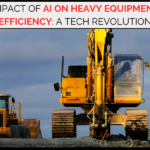Businesses across North America invested in nearly 40,000 robots worth over $2 billion in total in 2021. Surging demand and an ongoing worker shortage resulted in the need for robot installation across a range of industries from e-commerce warehouses to recycling plants. As they’re quick, reliable, and even able to work alongside human employees, even more robots are expected to be adopted in 2022.

Robots in e-commerce
39,708 robots were installed in factories and other industrial environments in 2021, up by 28% from 2020. Car manufacturers as well as the consumer goods, metals, and food industries, in particular, are key growth sectors. Additionally, e-commerce has been quick to adopt robots. For example, DCL Logistics, a fulfillment center based in California, recently switched to robots and now operates with less staff while producing as much as 200% more. “With human labor, what they produce depends on if they’re hungry or are they tired or have they had their coffee,” said Brian Tu, chief revenue officer at DCL Logistics. In contrast, robots work fast without the need for breaks. “We still have employees working around the robots,” said Tu, “but we can reduce labor by roughly half.” Indeed, quick and efficient order fulfillment has never been more important for e-commerce companies in today’s fast-paced modern world. Automation and technology are key to creating a fulfillment solution able to overcome challenges and handle growth cycles.
The Rise of “Cobots”
In contrast to traditional industrial robots (which typically replace whole assembly line sections), “cobots”, designed to work with humans, are also growing in popularity. For example, Stellantis, a Netherlands-based carmaker, has adopted cobots in their factory in Italy to help assemble the new Fiat 500 electric car. Manufactured by Universal Robots, the cobots use arms to find and fasten the car’s nuts and bolts. Additionally, Elon Musk, Chief Executive at Tesla Inc, recently said his engineers plan to start using an AI humanoid robot (“Optimus”) in their factories by 2023. According to Musk, these robots may end up being the ideal solution to severe labor shortages that are only set to increase. In fact, some financial experts at the Federal Reserve expect the unemployment rate in the United States to fall to under 3% in 2022 — the lowest its been in at least seventy years.
“The number one driver for automation is the labor shortage in manufacturing,” said Joe Campbell, a senior manager for applications development at Universal Robots. By December 2021, there were over 10 million open job positions in the United States, which is an improvement from the record-breaking figure of 11 million earlier in the year. In fact, according to Campbell, cobots are being embraced in industries traditionally reluctant to adopt automation. A construction firm, for example, now uses Universal’s cobots to install drywall in big construction projects. “Never say never,” said Campbell, “but I don’t see anything to slow us down”.








